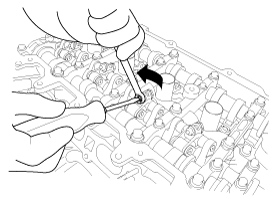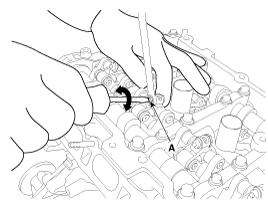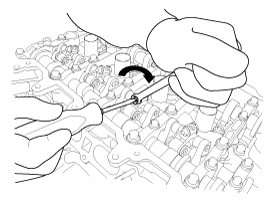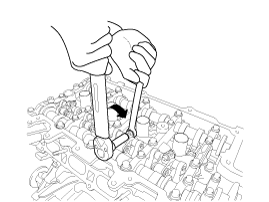Check the valve lift variation values per each cylinder on the sensor data in GDS.
Valve lift variation value : 0.1 mm (0.0039 in)
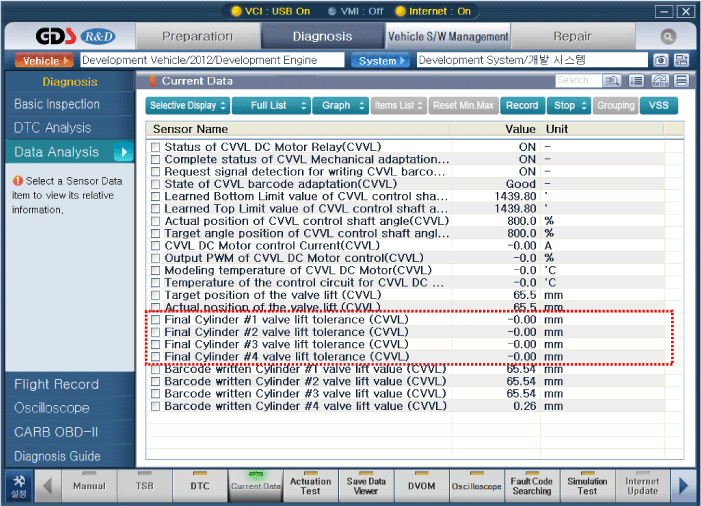
After checking the valve lift variation values, if the valve lift variation value is greater than the specification, adjust valve lift. Also after completing the replacement, recheck the valve lift variation values.
Especially replacement of the intake camshaft and intake valve can increase the valve lift deviation. Thus adjust and recheck the valve lift in order to reduce the valve lift variation values within the specification. (approx. 3 times)
